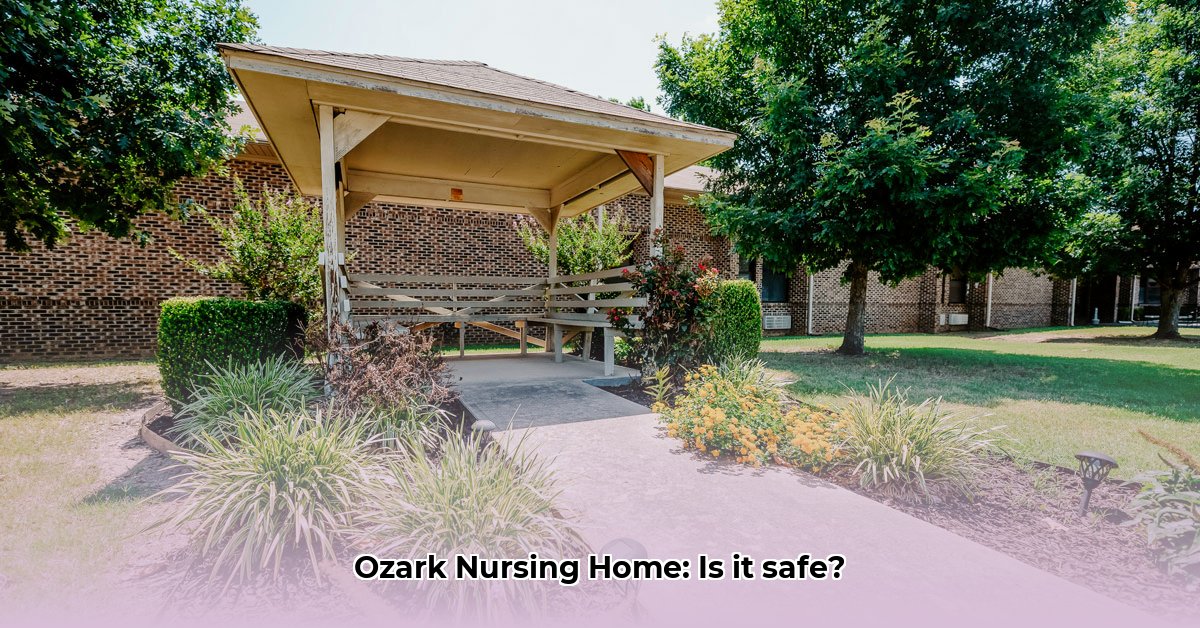
A Comprehensive Review of Ozark Nursing and Care Center
Picking the right nursing home is a difficult decision for families. Ozark Nursing and Care Center (ONCC) in Missouri holds a three-star rating, a score that warrants a closer look. This review delves into ONCC's performance, offering a detailed analysis of its strengths and weaknesses, alongside actionable recommendations for improvement. For additional resources on end-of-life care, see this helpful guide. We aim to provide families, potential residents, and healthcare professionals with the information needed for informed decisions.
Summary of Key Findings: A Mixed Bag
ONCC's three-star rating reflects a mixed performance. While residents demonstrate impressive self-care abilities, exceeding both state and national averages, significant concerns exist regarding weekend staffing levels and influenza vaccination rates, both falling below benchmarks. These issues raise questions about resident safety and the overall quality of care.
Detailed Analysis of Performance Indicators: Unveiling the Data
ONCC's success in fostering resident independence is a positive aspect, indicating effective care promoting self-sufficiency. However, this achievement is overshadowed by alarmingly low vaccination rates. Achieving high vaccination rates is crucial for preventing outbreaks and protecting vulnerable residents. The lower-than-average vaccination rate at ONCC suggests potential gaps in education or outreach programs. A bar chart comparing ONCC's vaccination rates with state and national averages would clearly visualize this disparity.
Furthermore, staffing levels present a critical concern. Data reveals inconsistent staffing across weekdays and weekends, potentially impacting care quality, especially on weekends when fewer staff members are on duty. Nurse staffing levels are also below the national average, potentially impacting response times and overall provision of care. This inconsistency presents a risk to resident safety and welfare. A similar bar chart comparing ONCC's weekend and weekday staffing ratios to those of comparable facilities would highlight the severity of this staffing shortage. How can we ensure consistent, high-quality care when resources fluctuate so dramatically?
Actionable Recommendations: A Path Towards Improvement
Addressing ONCC's challenges requires a collaborative effort from the facility, regulatory bodies, and residents' families.
Short-Term Goals (Within 1 Year):
ONCC Administration: Implement immediate strategies to address weekend staffing shortages, including competitive weekend pay, exploring flexible staffing models, and active recruitment. Simultaneously, launch a comprehensive vaccination campaign using educational materials and incentives. Prioritize enhanced infection control training to ensure regulatory compliance.
Missouri Department of Health: Conduct more frequent monitoring visits, increasing transparency by regularly sharing performance data publicly. Consider providing additional resources to help facilities like ONCC address their specific challenges. Improved data transparency enhances accountability and allows for more timely interventions.
Residents and Families: Foster open communication between residents, families, and ONCC administration through regular surveys and feedback mechanisms. This ensures that residents’ voices are heard and their input incorporated into improvement plans.
Long-Term Goals (Over 3-5 Years):
ONCC Administration: Develop a comprehensive plan exceeding national benchmarks in all key performance indicators. Explore innovative staffing models, such as partnerships with local nursing schools or integrating telehealth technologies. Invest in technology to enhance care coordination and record-keeping. Maintaining regulatory compliance must be a core value.
Missouri Department of Health: Implement statewide initiatives to standardize care quality and staffing levels across all nursing homes, including establishing minimum staffing ratios, providing standardized training programs, and implementing mentorship programs for staff development. A standardized approach ensures consistent quality of care across facilities.
Medicare/Medicaid: Introduce a system of financial incentives for nursing homes consistently exceeding performance benchmarks. This incentivizes continuous improvement and drives higher quality of care.
Risk Assessment: Identifying and Mitigating Potential Dangers
Understanding and mitigating risks is crucial for improving ONCC's performance. This Risk Assessment Matrix prioritizes areas needing immediate attention:
| Risk Factor | Likelihood | Impact | Mitigation Strategy |
|---|---|---|---|
| Inadequate Weekend Staffing | High | High | Implement short-term strategies outlined above; focus on competitive compensation and flexible scheduling. |
| Low Vaccination Rates | Medium | Medium | Implement comprehensive vaccination campaign including education, incentives, and addressing vaccine hesitancy. |
| Nurse Staffing Shortages | High | High | Offer competitive salaries, improve retention efforts (e.g., better work-life balance), and partner with local nursing schools. |
| Regulatory Non-Compliance | Low | High | Proactive regulatory training, regular internal audits, and robust quality assurance systems. |
Regulatory Implications: The Importance of Compliance
ONCC must comply with all federal and state regulations. Failure to comply can lead to substantial fines, loss of Medicare/Medicaid funding, and legal action. This underscores the importance of addressing identified deficiencies promptly and effectively.
Conclusion: A Call for Transparency and Accountability
ONCC's three-star rating serves as a catalyst for improvement. Addressing the identified issues requires a commitment to transparency and accountability. Collaborative efforts between the facility, regulatory bodies, and residents' families are essential to create a safe and supportive environment for all residents. Continuous improvement and open communication are vital for ensuring the highest quality of care.